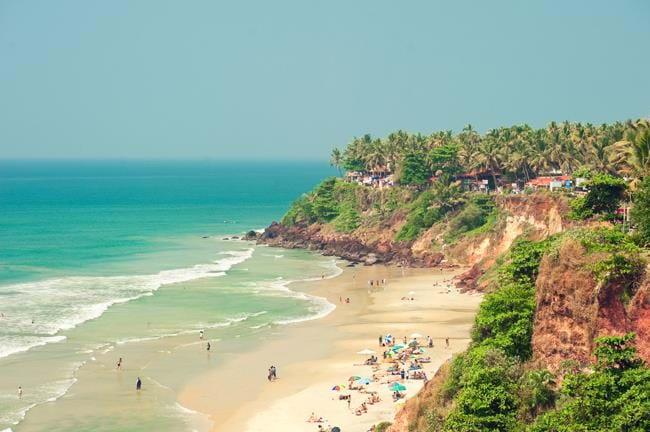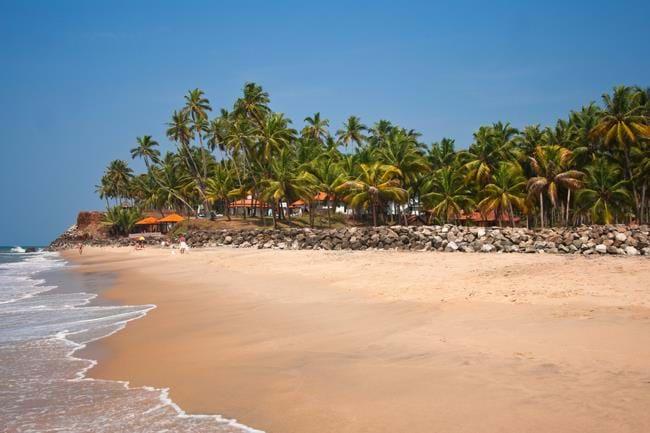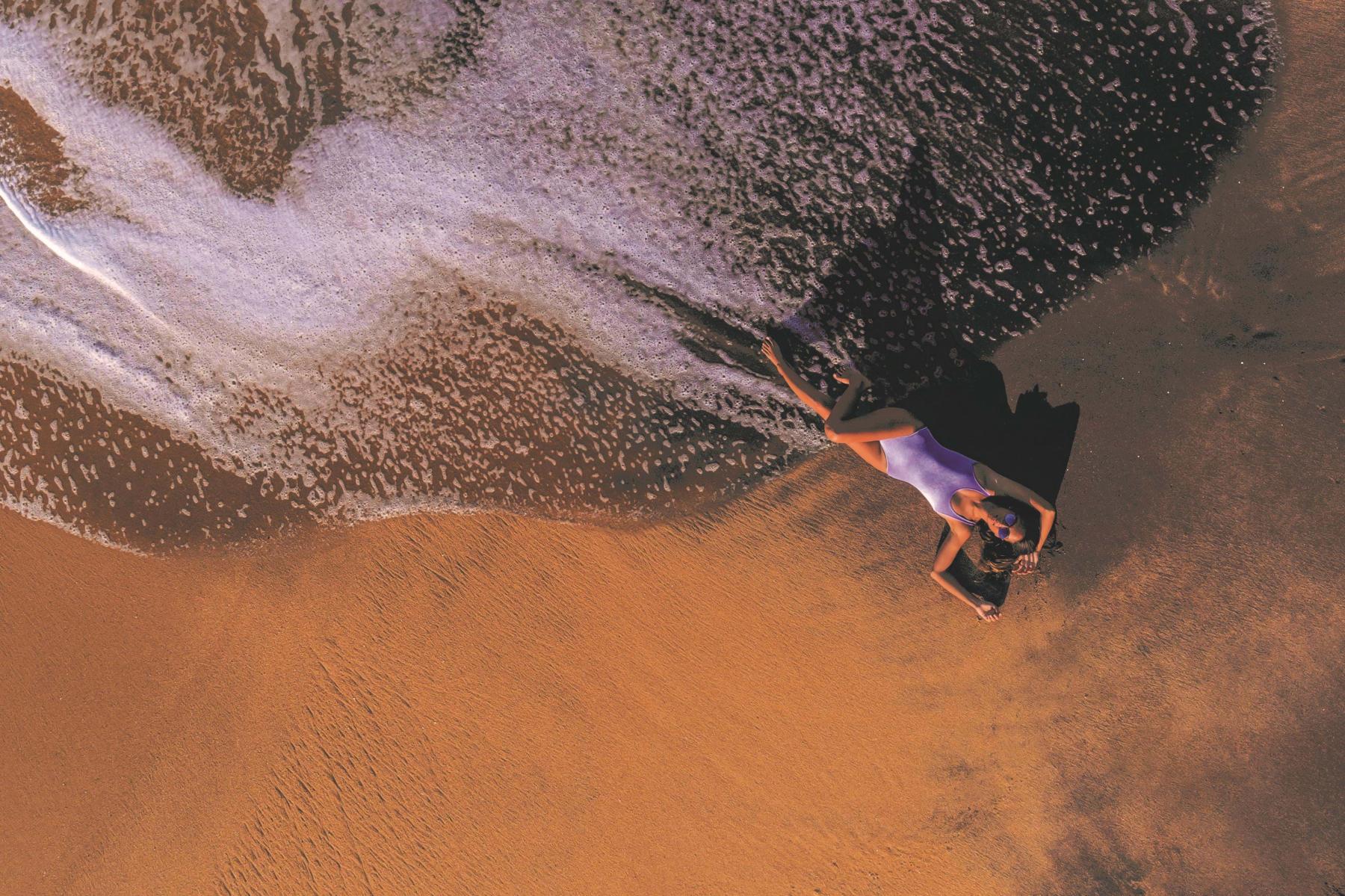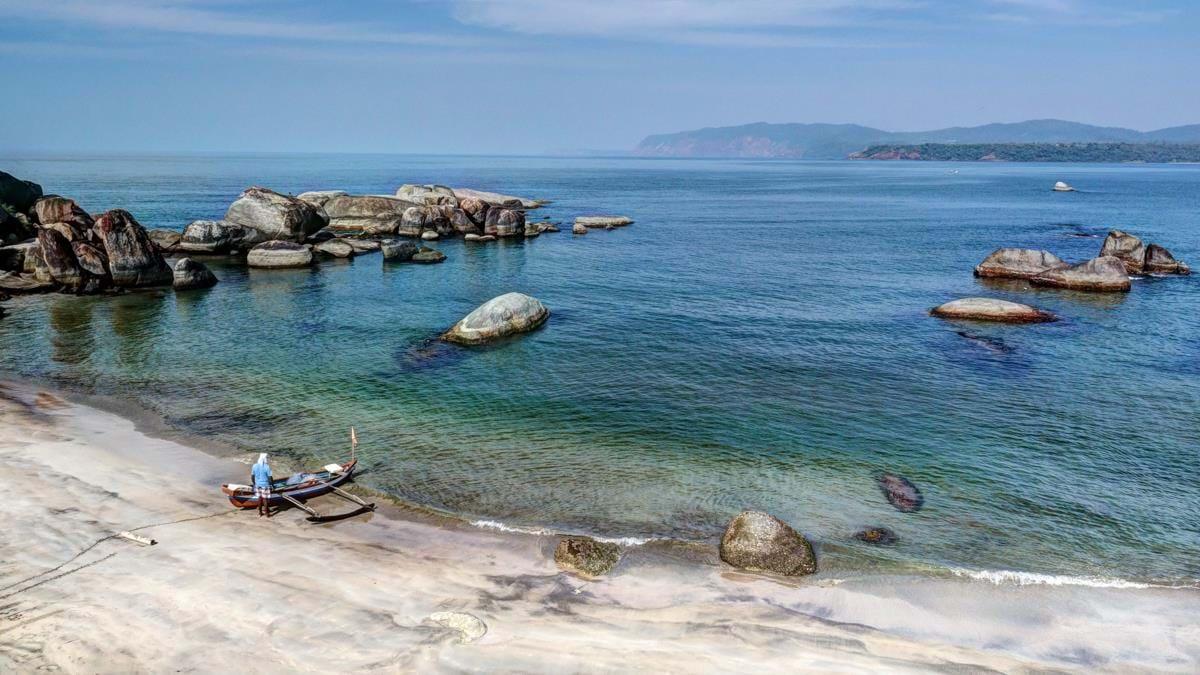India 10.01.2023 Updated: David Abram
At some point, most travellers touring India look forward to a well-earned break on a palm-backed beach, and there are plenty to choose from. Beautiful resort and boutique hotels have appeared in even the most remote corners of coastal India, providing comfortable bases from which to enjoy the surf and tropical weather.
The Beaches of Goa:

The former Portuguese colony on India’s Konkan Coast, in the southwest, is where beach tourism first took root in India. However, the miles of empty sand and wild coves beloved of backpackers in the 1970s have changed beyond recognition since the state became accessible by cheap flights.
This is somewhere it really pays to pick your spot. As a rule of thumb, most of the north coast is best avoided. For peace and quiet, we recommended one of the large resort complexes that line 15-mile-long Colva Beach in the south, spreading down the shoreline from Goa airport – a shimmering expanse of white sand, palm trees and surf where there’s always a peaceful spot to escape the peak season crowds. From there, you can make forays further south by taxi to Palolem and its adjacent villages, which shelter some of the prettiest bays in India, or take daytrips inland to visit the towering churches of Old Goa, the former Portuguese capital.
Find out more about Goa:
Explore Goa, Beyond the Beaches
The Beaches of Kerala

Kerala’s tropical coastline offers a fabulously exotic backdrop for a beach break. Kovalam is the region’s largest and most developed resort in the far south, near the capital Trivandrum. Scattered over three bays of golden sand and pounding surf, it’s best enjoyed from the comfort of the Leela Hotel, an opulent five-star situated on a high, wooded headland with chalets that spill down a palm-studded slope to the water’s edge. Further south, a string of more secluded coves are served by exclusive hotels such as the Travancore Heritage at Chowara, which occupies a 150-year-old mansion, and the idyllic Niramaaya at Pulinkudi, whose cottages are made from relocated antique Keralan houses.
North of Trivandrum, Varkala is famous primarily as a seaside temple town, though these days, it’s as popular with backpackers as pilgrims. Huge red cliffs back the beach here, a dramatic spectacle in the warm late afternoon light. When the light fades, the clifftop cafés and restaurants burst into life. Relax over a sundowner as the lanterns of the fishing boats offshore glow like stars on the Arabian Sea.
Marari, west of the Keralan backwaters between Alleppey and Cochin, holds a rank of ultra-luxurious, self-contained five-star resorts spread under a high palm canopy. The beach here has plenty of local character. Stroll along it around 4 pm, and you’ll rub shoulders with fishermen from the nearby village as they prepare their boats for the night’s trip out into the waves.
Finally, in the far north of Kerala, there are a few lesser-known gems worth visiting for the wild, empty feel of the beaches and fascinating traditional culture of the villages inland. From the wonderful Ayesha Manzil homestay in Thalassery (Tellicherry), host CP Moosa leads trips to exquisite coves you’ll have all to yourself. Further north, the owners of the beautiful Kannur Beach House can help guests track down the intense Theyyem masked-dance rituals that take place in nearby temples.
Find out more about Kerala:
Kovalam Beach, Kerala's quintessential beach
The Beaches of Andaman & Nicobar Islands

A two-hour flight east of Chennai across the Bay of Bengal, the Andaman Islands are a remote tropical archipelago off the coast of southern Myanmar. The British used them as a penal colony until 1947. The islands are covered in pristine forests and ringed by coral reefs. They are primarily wild, inhabited by Tamil settlers and tribes of aboriginal hunter-gatherers, some living in complete isolation from the wider world.
The only island geared for tourism is Havelock, whose breathtaking turquoise water and soft white shell sand are served by a cluster of hotels made from local hardwoods and grass-thatch.
Find out more about India's Andaman and Nicobar islands, here:




